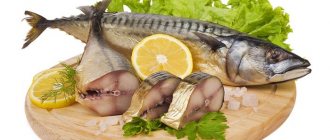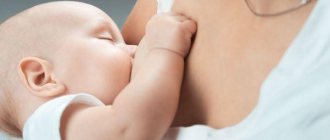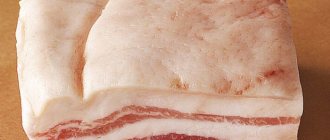Mastitis is an inflammation of the mammary gland that occurs mainly in women, manifested by pain, hardening of the skin on the chest, redness of the skin and fever.
- Causes of breast inflammation
- Pathogenesis
- Symptoms of mastitis Typical symptoms of mastitis
- Symptoms of mastitis in men
Mastitis is recorded in women aged 18 to 35 years. But there were cases of the disease in those who were between 15 and 50 years old. The period of 18-35 years is characterized by the activity of hormones, which can become a predisposing factor to mastitis. Inflammation of the mammary gland often occurs during the lactation period, but can also be observed outside it. This disease is rarely recorded among men and even children (boys and girls). Such cases are explained by hormonal disorders in the body.
There are two forms of mastitis: chronic and acute. Chronic is typical for women who are going through menopause. Types of mastitis (according to symptoms):
- Acute infected (inflammation complicated by infection of the nipple area, the process later affects the entire mammary gland)
- Serous (no infection occurs with this form)
- Chronic (diagnosed with inadequate therapy with antibacterial drugs for acute infected mastitis)
- Phlegmonous (with this form the general condition of a person sharply worsens due to general intoxication of the body)
- Abscess of the mammary gland or glands (occurs from serous or acutely infected type of mastitis)
- Gangrene of the mammary gland (a very serious condition of the mammary gland and the body as a whole, in which conservative treatment methods are no longer effective)
Causes of breast inflammation
The most common causes of mastitis are:
- The appearance of lactostasis as a result of stagnation of milk due to its large quantity in the first days after the birth of the child. During this period, the baby does not yet need a large amount of milk, so it remains (stagnates) in the mother’s breast.
- Incorrect attachment of the baby to the breast during feeding. As a result, the baby cannot completely suck milk from the milk sinuses. The remains of milk are located in one or more nearby glands. At the same time, the remaining sinuses remain in order, the processes of inflammation and hardening are observed only in the part of the chest where the tissues are soft and not affected.
- Anatomical imperfection of the nipple structure.
- Injury to the mammary ducts.
- Scratches of the skin of the chest through which any infection penetrates.
- Damage to the nipple as a result of the start of breastfeeding, through which various pathological microorganisms penetrate. This causes the development of an infectious disease. Everything gets worse when milk accumulates - pathogenic flora multiply in this environment.
- Large breast size. As a result, the sections of the breast fall down, and milk is not completely removed from them.
- Inflammatory processes in the body. From other areas and organs, the infection enters the chest through the blood. At the same time, bacteria multiply in milk, so the inflammatory process progresses quite quickly.
- Weakened immunity due to recent childbirth.
- Chest hypothermia (mother was not dressed for the weather, etc.)
Outside the lactation period in women, the following factors can cause inflammation of the mammary gland:
- Chest hypothermia
- Hormonal imbalance in the body
- Exacerbation of radiculitis of the cervical and thoracic regions
- Reduced general immunity of the body
- Long-term treatment of any infections
- Injury to the mammary glands, which causes infections to enter the breasts
- Breast tumors (malignant or benign)
- Stressful situations
Mastitis in men can be caused by the following reasons:
- Metabolic disorders
- Endocrine disorders in the body, which disrupts the correct balance of hormones. As a result, there is a decrease in the production of androgens, which are typically male hormones.
- Injuries to the mammary glands and infection there
- Some diseases from a range of urology
- Pathological changes in the structure of the mammary glands in men
- A number of tumor processes in the adrenal glands, which leads to an increase in the amount of female sex hormones (for example, estrogens) in the blood
An imbalance of hormones in the male body can be explained by the following reasons:
- The use of a number of drugs that lower blood pressure and tranquilizers without a doctor’s prescription.
- Regular consumption of large quantities of alcoholic beverages, especially beer.
- A number of gastrointestinal diseases that lead to false or true gynecomastia (enlarged mammary glands in men)
- Use of various types of anabolic hormones (typical for professional strength athletes)
Symptoms of mastitis
If a woman is in the period of lactation (the gland produces milk to feed the baby), then the manifestations of mastitis develop very quickly, within 2-3 days after milk begins to stagnate in the breast.
Typical symptoms of mastitis:
- The appearance of severe pain in the mammary glands
- Increased breast sensitivity
- Increase in local temperature
- The appearance of lumps in part or throughout the mammary gland
- The appearance of breast edema, as a result of which the mammary gland enlarges
- Redness and thickening of the skin over the area of inflammation
- Enlarged lymph nodes (in some cases)
The temperature can increase not only in the area of inflammation, it can be an increase in body temperature as a whole. In rare cases, it can reach 40˚C in a very short time. In some cases, manifestations such as tachycardia are recorded; this is mainly characteristic of the infectious form of the disease.
Leukocytosis is detected in the blood - an increase in the number of leukocytes in the blood, which occurs with the infectious nature of the disease. During the lactation period, pain due to mastitis during breastfeeding increases and becomes aching. Each type of mastitis has different symptoms, which helps doctors make a diagnosis.
Serous mastitis is characterized by pain, lumps in the mammary gland, normal skin color throughout the breast, and normal local and general temperature. The acutely infected form is characterized by lumps in the chest, pain, redness of the skin over the site of lump formation, and thickening of the skin. The pain becomes more severe, appearing even with a light touch to the inflamed gland. The general condition of the patient is characterized as very poor.
The chronic form of mastitis is characterized by the presence of compactions in the gland, the skin does not change color, and there is no severe pain. The general condition of the patient is characterized as satisfactory, the temperature does not increase or increases slightly, reaching a maximum of 37.5 degrees in some cases. Such an increase in temperature indicates an inflammatory process in the body, which proceeds rather sluggishly.
A breast abscess is characterized by the formation of a lesion with clear contours with a large accumulation of pus, while this area of the breast softens and becomes reddened. Swelling of the breast and pain in it are recorded. The general body temperature is constantly and greatly elevated. An increase in regional lymph nodes is also observed.
The phlegmous type of mastitis is characterized by a sharp deterioration in the general condition of a person, manifestations of general intoxication of the body, disturbances in appetite and sleep patterns. Typically, regional lymph nodes are enlarged and painful. Subcutaneous dilated veins are visible through the skin. The mammary gland may take on a different shape, possibly retracted nipple.
For the gangrenous form of mastitis, the patient’s serious condition is typical. On the inflamed gland, the skin becomes bluish or even purple, and the breasts take on a different shape.
Symptoms of mastitis in men
In addition to the above-mentioned gynecomastia, the disease in question can manifest itself in males by the production of defective breast milk. The possibility of mastitis in men is explained by the fact that the structure of the mammary gland in them is similar to that in women. Only the degree of their development differs - in men it is small. It should also be remembered that before the onset of puberty, the breasts of girls and boys are the same.
Inflammation of the mammary glands in men can occur both with their pathological enlargement and with the normal size of the mammary gland. In men, mastitis begins with a serous form in all cases, it looks like swelling. Pain appears in this area. Upon palpation, doctors find small compactions in the gland. If mastitis is not treated at this stage, the lymph nodes located under the arms will further increase in size. They may hurt when touched or even at rest.
The disease is further characterized by the appearance of infiltration. A large number of leukocytes appear in the affected gland, which explains the appearance of the infiltrate. During this phase, the temperature in the chest area rises, and the overall body temperature also rises. The chest becomes painful, swelling progresses. Skin hyperemia in the affected area is recorded. The man has symptoms of body intoxication.
If the disease is not treated at this stage, then the next thing to expect is the transition of mastitis to the purulent stage. The pain becomes more intense, the manifestations of intoxication also intensify. Palpation of the mammary gland reveals a lump that is painful and hot to the touch. The skin above the site of abscess formation is very red. Purulent manifestations of mastitis are recorded in men very rarely. This form of inflammation poses a danger to human life. Such conditions are characterized as emergencies, which necessitates urgent surgical intervention.
Mastitis of newborns and small children
In infants, breasts may become enlarged and swollen due to hormonal changes. Doctors call this physiological mastopathy; such processes are considered a variant of the norm. The skin should remain a normal shade if the glands are enlarged by a maximum of 3 cm in diameter. Under the skin, no changes are observed, including compactions.
A grayish or milky-white fluid may be released from the breast of a newly born baby. This happens on the second day of a child's life. Field of the 7th day the phenomenon fades away. This variant of the norm does not need to be treated. You cannot squeeze liquid from the baby’s chest, you cannot heat it, use ointments (including Vishnevsky’s ointment), and the use of tinctures, camphor and other means of therapy is prohibited. All this can lead to cracks in the newborn’s nipples. Then they get infected, and severe mastitis cannot be avoided.
Neonatal mastitis can be caused by miliaria with pustules. This only happens if the child is rarely bathed. Mastitis appears in infants if they have low immunity. This can happen, for example, if the mother does not breastfeed him.
Infant mastitis can appear at 2-3 weeks of life. Then this disease is inflammatory in nature. The mammary glands become even coarser. Mastitis becomes purulent. In most cases, only one gland is affected by the process. Severe chest pain is also common. Intoxication of the body begins to clearly manifest itself. Body temperature rises, convulsions and fever are recorded. The child becomes lethargic and lethargic, constantly cries and worries for no apparent reason. The newborn does not want to suckle or starts and stops; the appetite is clearly poor. There may be problems with the digestive tract, characterized by vomiting, regurgitation, and loose bowel movements.
The next stage is redness of the mammary gland and its swelling, the pain becomes stronger. It may be noted that the affected breast is hotter than the healthy one. The disease, if not treated, develops, suppuration is recorded in the affected area, then phlegmon and sepsis may appear.
Purulent mastitis is very dangerous for girls, because it causes part of the gland to die and some ducts to become clogged. When the girl grows up and gives birth herself, she will have poor lactation. If treatment is prescribed incorrectly or done at the wrong time, mastitis becomes chronic (chronic). The affected areas become extensive, there is pus, which can periodically break out through the skin.
Mastitis in girls
Mastitis in girls is not a common disease. During puberty, inflammatory processes in the form of fistulas, which are located near the nipple on the pigment ring, can be recorded. The products of the inflammatory activity of the fistula are removed through the nipple.
And only in rare cases does mastitis actually occur. The manifestation is a focus of softened tissue with increased local temperature near the pigment ring, which appears suddenly. The skin at the site of inflammation is hyperemic.
Mastitis in boys
During puberty, boys may experience pubertal gynecomastia. Typical symptoms: enlargement and pain. Therefore, sometimes this phenomenon is confused with mastitis. However, pubertal gynecomastia is a normal variant and can last 1-2 years. If no changes occur after this time, then the child should be taken to an endocrinologist who will prescribe additional research methods.
Inflammation of the lymph nodes of the mammary gland
With inflammation of the mammary gland, enlargement of the axillary lymph nodes may be observed. With such anomalies, mastitis and mastopathy (pathological growth of breast tissue) are recorded. With mastopathy, the lymph nodes are enlarged in size and they hurt. Fluid begins to leak from the mammary gland. If you notice these symptoms, immediately consult a doctor.
Erysipelas of the mammary gland
This is an inflammatory process of the skin of the breast of a serous-exudative nature. At the site of erysipelas, dystrophic changes in the skin occur, and the conductivity of skin vessels is also disrupted. In certain cases, inflammation of the mammary gland (mastitis) causes erysipelas of the skin, which is a complication of mastitis.
Among the typical symptoms of erysipelas mastitis is the acute onset of the disease. Intoxication occurs in the body, which immediately manifests itself clearly. The head hurts, the muscles hurt, the person is weak and broken, there may be nausea and/or vomiting. An increased temperature is noted - up to 39 - 40˚C. After 2-4 hours, pain and redness appear in the affected area, and the symptoms gradually intensify. Swelling of the skin of the inflamed area is recorded.
The typical manifestation is an erythrematous rash raised above the skin level. The lymph nodes closest to the inflammation become larger than normal. Mild complications include disruption of lymph flow and blood flow in the mammary gland.
Inflammation of the nipple
- Inflammation of a woman's nipple is characterized by the following symptoms:
- Redness of the breast skin around the nipples.
- Engorgement of the nipples.
- The appearance of pain in the nipples.
- Sensations of squeezing and bursting in the mammary gland.
- Increase in general body temperature.
Inflammation gradually progresses and spreads without timely and correct therapy. Swelling of the mammary gland and skin tension are observed. The skin in that area acquires a burgundy tint, the skin becomes hotter than normal. General intoxication of the body appears. The person becomes weaker and his head constantly hurts. When breastfeeding a baby, the nipple and the breast itself are very sore. The same thing happens when you try to express milk. It is important to note that with mastitis, the amount of milk in the breast may decrease.
How to treat mastitis
Treatment of mastitis should be carried out only under the supervision of a doctor, because drugs from the antibacterial group will be prescribed. The most effective are penicillins, aminoglycosides, macrolides and cephalosporins. All of them can penetrate into breast milk and negatively affect the health and development of the baby - continuing to breastfeed a child with mastitis is strictly prohibited!
If the pathology was diagnosed at the initial stage of its development, then Vishnevsky ointment can be used. This remedy reduces pain, promotes the resorption of infiltrate and accelerates the removal of milk. True, there is another opinion regarding the advisability of using Vishnevsky ointment - some surgeons argue that it is this method of treating mastitis that provokes its transition to purulent.
How to treat mastitis with folk remedies:
- apply cabbage leaves to the inflamed areas, after lightly beating them until droplets of juice appear;
- consume a decoction of dill seeds in small portions throughout the day;
- ensure the flow of milk, prevent its stagnation - constantly express, lubricate the breasts with honey.
Mastitis is a serious condition that may require surgery. Timely diagnosis is the key to successful and quick treatment. You can make an appointment with a doctor on our Dobrobut website. com. The specialist will examine the breasts and provide advice to nursing mothers.
Diagnosis of breast inflammation
If alarming symptoms appear, you should urgently go to see a mammologist. The doctor conducts an examination, palpation, and in most cases prescribes additional studies. This is important to rule out other breast diseases. For accurate diagnosis, ultrasound is used - ultrasound examination of the milk ducts. This allows you to determine the nature of the inflammatory process, its stage, and also prevent possible complications. Based on the results of the ultrasound, the attending physician prescribes certain conservative treatments.
If an abscess or malignant tumor is suspected, not only an ultrasound scan is performed, but mammography, magnetic resonance imaging, and also a biopsy are performed for further research in the laboratory.
As for the differential diagnosis of mastitis, it is necessary to exclude breast tumors, which is not an easy task. Cancerous conditions can be confused with an abscess. Differential diagnosis of the mammary gland is carried out using ultrasound. If a woman has a history of cysts, the doctor's job becomes easier.
Dangerous consequences of lumps in the mammary gland during breastfeeding
Mastitis is the most hated consequence of stagnation. And if mastitis is not treated in time, purulent formations may appear in the mammary gland, which will require surgical intervention.
This means the end of natural feeding. That is why everything must be done to prevent the formation of mastitis. A spontaneous feeling of heat (temperature up to 40 °C) should alert you. The main thing is not to panic and consult a doctor in a timely manner. With the help of physiotherapeutic and ultrasound procedures it will be possible to clear the ducts.
ONLINE REGISTRATION at the DIANA clinic
You can sign up by calling the toll-free phone number 8-800-707-15-60 or filling out the contact form. In this case, we will contact you ourselves.
If you find an error, please select a piece of text and press Ctrl+Enter
Treatment of mastitis
Treatment of acute mastitis should begin in the early stages, which helps prevent an abscess (formation of a purulent lesion area). This is especially true for infected forms of the disease. Therapy begins, first of all, with antibiotics, which in a short time alleviate the condition of the sick person.
If, after a certain course of antibiotics, a person does not feel better, he is sent to a hospital in order to carry out more effective methods of treatment, and so that the patient is constantly under medical supervision. It is important to accurately distinguish mastitis from diseases with similar manifestations, as mentioned above.
If a woman gets mastitis during lactation , then breastfeeding does not stop. Because emptying the breast canals helps reduce or completely eliminate the inflammatory process. Microorganisms that may be present in milk do not pose a threat to the health of the newborn. But at this time you need to take antibiotics that are not concentrated in the milk and are not transmitted to the child. This is the main task of the doctor who prescribes therapy.
In the serous form of mastitis, bandages are applied to the chest so that the gland is suspended. In this case, the use of dry heat on the chest is indicated. During the lactation period, the baby needs to continue to be fed, which will ensure the speedy disappearance of mastitis. Also, for the treatment of serous mastitis, experts prescribe semi-synthetic penicillin antibiotics and first and second generation cephalosporins.
Traditional medicine is also relevant to a certain extent for the treatment of mastitis . Sometimes compresses with aloe coca, Kalanchoe juice and carrot juice are used. It is also important to apply a chopped fresh cabbage leaf and a plantain leaf to the area of inflammation. But these methods can only be used as auxiliary ones, and only with the approval of the attending physician.
Treatment of breast abscesses involves surgical methods. The abscess is opened, emptied of contents, and drained. During the operation, all purulent paths are monitored using digital examination. After this, all purulent passages are connected into one cavity. If the abscess was opened at an early stage of its formation, then this preserves the proper functioning of the mammary gland.
After the operation, rehabilitation therapy is necessary. Antibiotics and anti-inflammatory drugs are used. As for antibiotics, broad-spectrum drugs are used first. After that, a study is carried out to determine the reaction of microorganisms in the abscess to the action of certain drugs, and in accordance with the available results, more specific drugs are prescribed.
After the inflammatory process has subsided, the doctor may prescribe a course of breast massage. If treatment was started late or the wrong drugs were prescribed, phlegmon develops. This is a diffuse inflammatory process. Further, only surgical treatment in a hospital is relevant; medications will no longer help. Sometimes the question is raised about the need to remove the entire breast.
Broad-spectrum antibiotics are important for the treatment of erysipelas of the mammary gland Doctors also prescribe antimicrobial drugs, for example, sulfonamides. Ultraviolet irradiation of inflamed skin is relevant. For treatment, agents that strengthen the immune system are also used. If the cause of erysipelas is mastitis, then you need to cure the inflammation of the mammary gland in a known way.
Regarding the treatment of mastitis in men, it is important to determine the cause of the disease. Perhaps the reason lies in the primary disease that provoked mastitis. It is this disease that needs to be eliminated, first of all. The choice of treatment methods for breast inflammation in men depends on its type and stage. The serous form is treated with conservative therapy. The person must be at rest, observing bed rest, he is prescribed antibiotics, and physiotherapeutic methods are also relevant. In case of a purulent abscess in a man, it is necessary to resort to surgical methods of treatment. Medicines will not give the desired effect.
Mastitis of newborns is treated in a hospital, using both conservative and surgical methods. When no pus is observed, compresses, antibiotics and anti-inflammatory drugs are used. If mastitis has entered the purulent phase, then its treatment requires surgical intervention, in which the gland is opened and the pus is removed from it.
Antibiotics for mastitis
For the treatment of mastitis, as already noted, antibiotics are relevant. They are also used as a means of rehabilitation after operations. The doctor may prescribe both broad-spectrum and narrow-spectrum antibiotics. Most often, semi-synthetic penicillins and cephalosporins of the 1st and 2nd generations are relevant. Drugs such as amoxicillin are effective:
- Hiconcil,
- Osmapox,
- Flemoxin-Solutab,
- Grunamox,
- Amoxicillin-ratiopharm,
- Amotid,
- Ranoxil.
Among phenoxymethylpenicillins, a drug such as Ospen is relevant. Penicillin preparations in combination with lactamase inhibitors, which are produced by enzyme microorganisms - clavulanic acid or sulbactam, which are capable of destroying these antibiotics. These include Augmetin, Amoxilav, Moxiclave.
Cephalosporins for the treatment of mastitis:
- Cefazolin (Zolfin, Kefzol, Lizolin, Prozolin, etc.);
- Cephalexin (Ospexin, Prolexin, Sporidex, etc.);
- Cefuroxime (Zinacef, Zinnat, Aksetin, Ketocef);
- Cefaclor (Vercef, Ceclor, Taracef).
Prognosis of breast inflammation
The prognosis for the results of treatment of inflammation of the mammary gland depends on the stage of the process at which therapy began, as well as the type of mastitis. In the serous and acute infected phase, the prognosis for cure and absence of relapse of the disease is positive if therapy is started on time, at the very beginning of the disease. If a person does not carry out the medical procedures prescribed by the doctor, then the serous form of mastitis soon becomes chronic. And further treatment will be even more complex and expensive.
Chronic mastitis cannot always be completely cured. Some people experience relapses of inflammation, which can be explained by decreased immunity, as well as hormonal imbalances in the body.
If abscesses are treated with surgery, complications are likely - the breast tissue becomes scarred. And this complicates the process of breastfeeding a newborn/infant for women. It also changes the appearance of the breasts. In many cases, surgical treatment of purulent inflammation of the mammary gland does not affect the functioning of the breast, and a small scar remains on the skin of the breast.
The phlegmonous form of mastitis poses a serious threat to a woman’s health; there may be complications, and sometimes the mammary gland needs to be completely removed. With gangrene, not only the removal of the mammary gland occurs, but also a threat to the general condition and life of the patient. With gangrenous inflammatory processes, deaths can occur due to general severe intoxication of the body.
Breast inflammation
Any inflammation of the mammary gland is called mastitis.
To treat mastitis, the specialist (in addition to knowledge) must have a license to provide assistance to patients with purulent diseases in the institution where he helps them. That is why many doctors can only offer patients with mastitis a consultation (at the level of a consultation with an oncologist-mammologist or surgeon). In most cases this is enough. In the case of severe, widespread mastitis - when hospitalization is required - patients will be forced to go to specialized “purulent” hospitals.











